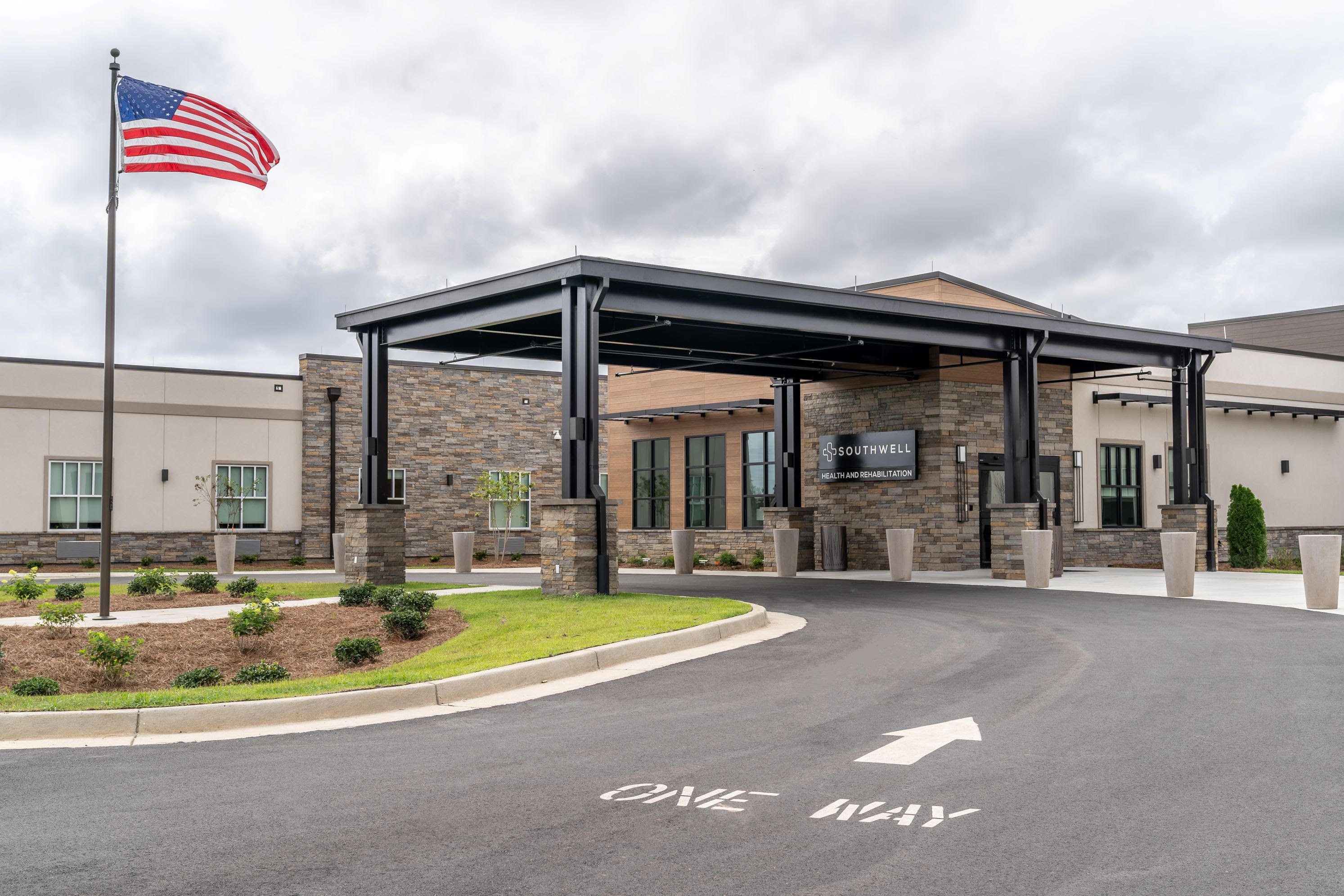Lynd’s execution nears
Published 11:27 pm Saturday, May 3, 2008

- William Earl Lynd
As a group of reporters chatted during a recess in the 1990 murder trial of William Earl Lynd, former WALB-TV reporter Jerry Gunn said the case was like something out of a Willie Nelson outlaw song.
Lynd was on trial for brutally shooting his girlfriend, Virginia “Ginger” Moore, during an argument two days before Christmas 1988 at their Berrien County residence.
Leaving her in a shallow grave, Lynd drove to the Ohio-West Virginia area, a region where he had lived during his youth. There, he shot a school teacher during a bungled robbery on Christmas day. The teacher died of complications from her wounds.
By then, Lynd was traveling to Texas where, according to some testimony, he considered killing a woman from his past. Instead, in Texas, he visited his brother, who talked William Earl Lynd into surrendering. Together, the Lynd brothers drove back to Georgia, where William Earl Lynd surrendered to the Berrien County Sheriff’s Department on New Year’s Eve 1988.
In jail, after taking his confession, Lynd reportedly said helping authorities find Ginger Moore’s body was the right thing to do. Throughout the first week of 1989, Lynd tried recalling where he had buried Moore on the night of Dec. 23, until finally they found her remains.
No disrespect was intended by referring to these awful events as being similar to something from a Willie Nelson song. It was merely one reporter’s attempt to get a grip on that deadly week in Lynd’s life, which led to the deaths of two women. None of the other reporters who heard Gunn’s reference disagreed with him.
Given that reporters write stories, it was a way to better understand the plot of the Lynd murder trial, which continued in the Berrien County Courthouse, every day, including a Saturday and Sunday, for nearly two weeks in late February 1990. The jury found Lynd guilty of kidnapping and murdering Moore and sentenced him to death.
Yet, for nearly 20 years, it has been a story without an end. That end likely comes this Tuesday evening when William Earl Lynd, now in his early 50s, is scheduled to die by lethal injection at the Georgia Diagnostic and Classification Prison in Jackson.
***
On Monday, if all goes as scheduled, William Earl Lynd, No. 437139, will be moved from his cell on the Jackson facility’s death row, where he’s been since 1990, to a cell next to the chamber, says Paul Czachowski, Department of Corrections office of Public Affairs manager.
He will be allowed visitation with family. Lynd has children, though it is not known if they will visit. On a prison Voices from the Inside Web site, Lynd wrote in 2005, “All friends and those I cared about over the last 16 years have all slowly drifted away and out of my life.” However, on the same site, he lies about his age by a decade, claiming he was 40 years old at a time when he would have been turning 50. After he has visitors, if he has visitors, a chaplain will visit Lynd.
There will be a last meal. An inmate facing execution is allowed anything he wishes, Czachowski says, within reason. Lynd has selected and will receive two pepper-jack barbecue burgers, two baked potatoes with sour cream, bacon and cheese, and a strawberry milkshake.
As Tuesday progresses, Department of Corrections will implement what they rehearsed without Lynd this past Friday afternoon. Tuesday will be no rehearsal, and Lynd will be very much involved.
As the 7 p.m. execution draws near, Lynd will be offered a mild sedative, which he can accept or refuse. At 7 p.m. Tuesday, unless Gov. Sonny Perdue stays the execution, Lynd will be removed from his cell and placed on a gurney. He will be escorted by a team to the chamber, where officers will strap him to the gurney. A registered nurse will put a line into each of Lynd’s arms; one line serves as a back-up.
Witnesses will be brought into the observation room of the chamber. A curtain lifts allowing them to see Lynd. The warden will read the order of the court to execute Lynd.
Lynd will be offered the opportunity to speak any last words. Some condemned inmates have something they wish to say, Czachowski says, while others do not.
Then, two grams of sodium pentothol will be given to Lynd along with a saline solution to keep his veins from collapsing. This is followed by 50 milligrams of Pavulon, a paralyzing agent. Lynd then receives the killing stroke: Potassium chloride to stop his heart.
Czachowski says many inmates appear to simply go to sleep. Some even snore before they die.
The warden will take Lynd’s pulse and declare him dead. The curtain will close to the witnesses. Lynd’s body will be sent to the Georgia State Crime Lab. After an autopsy, Lynd’s body will be released to the family.
***
The original sentence, the one a jury returned late on an afternoon in February 1990, was death by electrocution. But the chair has been replaced by the gurney, electricity with a cocktail of chemicals.
The trial started a little more than a year after Lynd helped Berrien County authorities locate Ginger Moore’s body behind a shed in Tift County. A few months prior to trial, on Oct. 25, 1989, Lynd had been found competent to stand trial. Yet as the February 1990 trial started, the defense team stated Lynd remained incompetent, unable to finish simple tasks in the Berrien County Jail, but the trial moved forward.
Lynd was displeased with his defense team. He had selected attorney Clyde Wayne Royals, who had not previously worked a death-penalty case. To aid Royals, the court selected attorney Jack Carter and Roger Douglas. In court, Lynd expressed he should have been given the right to choose whom he wanted as court-appointed attorneys. During trial week, Alapaha Circuit Judge W.D. “Jack” Knight appointed public defender Jay Reese Franklin to the defense team.
The defense team pushed for a change of venue, which led to representatives from The Valdosta Daily Times, The Tifton Gazette, WALB-TV, and the now-defunct WVGA 44 testifying on the coverage given to the Lynd case and the extent of each media organization’s coverage area.
Throughout the hearings, the jury selection, and the trial, Carter led the defense in objections and motions for mistrials. Motions for mistrials were entered at almost every turn. A mistrial would declare the jury tainted and mean the case would have to be heard again at a later date in front of a new jury. All of these motions were denied.
One motion for a mistrial came as then-Alapaha District Attorney Robert Ellis questioned a witness who served as an investigator for the defense. In front of a standing-room-only crowd on a Sunday afternoon in Berrien County Superior Court, Ellis asked the witness if he’d ever been convicted of two counts of burglary in Wayne County; the witness said he’d been pardoned of those charges.
Ellis then asked the witness if he’d ever accidentally shot his girlfriend between the eyes while practicing the quick draw with a pistol. The witness said yes, and laughter erupted in the courtroom. Ellis then asked if the witness had ever shot his wife in the rear-end doing the same thing. The witness testified that, no, he had not shot his wife in the rear-end because he was in jail on the Wayne burglary charges at the time. The witness said his wife had shot herself in her own rear-end.
Sustained laughter filled the courtroom. Carter made a motion for a mistrial on the grounds of humor in the courtroom. Judge Knight denied the motion, essentially ruling, if it’s funny, it’s funny.
That would be the only funny moment in a week of grisly evidence and heartbreaking testimony. Lynd’s then-teen-age children testified. Members of Ginger Moore’s family gave heart-breaking testimony.
A line of defense questioning allowed the state to introduce evidence and testimony on unrelated cases to Moore’s kidnapping and murder. Though he wasn’t being tried for the Ohio death, the Berrien jury learned of Lynd’s involvement in the Ohio-area robbery, shooting and subsequent death of teacher Leslie JoAnn Starkey. They learned of charges and accusations of crimes in Lynd’s past.
A Tifton woman testified that Lynd had attacked and attempted to rape her in November 1988. It had been nighttime. She was driving home. A car behind her kept flashing its headlights on and off. She stopped. So did the car behind her. William Earl Lynd was the driver of the other car, she testified, though she did not know him at the time of the incident. He had approached her driver-side window and said something was dragging from underneath her car, causing sparks near her gas tank. He said it looked dangerous and offered to drive her up the road to get help. Once inside his car, the Tift woman testified, Lynd demanded sex. He hit her and made sexual advances before the Tift woman was able to escape.
On Monday, Feb. 26, 1990, the Berrien County jury found William Earl Lynd guilty of kidnapping and murder in the Dec. 23, 1988, shooting death of Ginger Moore. On Feb. 27, 1990, after a full day of emotional testimony, and an hour and 40 minutes of deliberations, the jury returned with the death sentence for Lynd.
He had not taken the stand in his own defense, and Lynd remained quiet as the sentence was read. As quiet as he had been throughout most of the trial.
***
For the most part, publicly, Lynd has been silent ever since. He’s never conducted a lengthy interview following his sentence.
With the advent of the Internet, he did file the 2005 posting on the Voices from Inside Web site, or at least there is a posting there bearing his name, inmate number, and photo. It opens with, “Hi! My name is Earl,” adding that he has been on death row for many years.
In addition to mentioning that he has lost contact with family and friends, Lynd writes, “I am very open minded and I am very much into different cultures. My passions are simple, I love the outdoors and nature and long rides through the country and mountains and a summer day on the beach. To me this is art in its purest form.”
The Web site is an opportunity for inmates to meet people through the Internet, and Lynd takes advantage of this possibility.
“I love writing and getting long letters, and getting lots of pictures and making friends. … I try to keep positive and live day by day. At times it is hard to do alone. So I am hoping to hear from you and we can become friends.”
Perhaps the most compelling thing William Earl Lynd has had to say on the record since that grisly week in 1988 came in his New Year’s Eve confession to then-Berrien County Sheriff Jerry Brogdon. This confession would become the framework of the state’s case against him, and tell the story behind why Lynd is scheduled to die this week.
***
Born in 1955, William Earl Lynd has found himself in trouble most of his adult life. There was a 1975 case for kidnapping a woman in Kentucky, a 1975 case for the wanton endangerment of another woman, a series of thefts in Ohio from 1974-75, a sexual battery case on a Florida woman in 1985, a 1982 conviction for a 1978 rape, according to prosecution statements and testimony during his 1990 Berrien County trial. Lynd had also been connected with the rape of three women in West Virginia. He had also been the suspect, and later cleared, in the shooting of a Kentucky state trooper.
All of this had already occurred by the time Lynd met Ginger Moore, dating then living together, in the 1980s. Lynd was already the father of a son and a daughter who were in the care of his parents in Florida. Lynd and Moore’s relationship was described as volatile.
Lynd’s children testified that he and Moore argued during Thanksgiving 1988. Sheriff Brogdon testified that he had spoken with Lynd and Moore on several occasions concerning domestic matters.
On Dec. 23, 1988, they had argued throughout the day, according to testimony involving Lynd’s confession. That evening, Lynd left their home to get cigarettes. Upon his return, the argument continued and Moore hit him. Lynd drew a .32-caliber Derringer and shot her. Moore fell across the couple’s waterbed.
Lynd went outside to smoke a cigarette. He sat on a porch step, the Derringer still in his hand. Prosecution testimony and the defense’s closing argument differ as to what happened next. In both cases, Moore jumped Lynd from behind as he sat on the stoop. The defense claimed she attacked him with a pair of scissors, though scissors were never entered into evidence. The state’s case never mentioned scissors.
In both accounts, the result was the same. With the Derringer still in his hand, not rising from the step, Lynd shot Moore a second time. The defense, however, claimed this second shot was in self-defense.
He put her in the trunk of her car and drove along Coffee Road. When Moore started thumping against the trunk, Lynd stopped the car, opened the trunk, and shot her a third time.
“The last vision Ginger Moore saw out of her big, brown eyes was of the man she loved poised over her with a gun, pulling the trigger and placing the third and final bullet in her head,” then-D.A. Robert Ellis said in the prosecution’s closing statements. “The only Christmas present she got that year were three lead bullets in the head and a shallow grave behind a shed in a cold, strange place.”
Lynd would bring a Christmas tragedy to another woman two days later.
***
Leslie JoAnn Starkey was a teacher off for the holidays in Lawrence County, Ohio. While driving Christmas evening, a car behind her began flashing its headlights. She pulled over and so did the other car. The other car’s driver told Starkey that her car was dragging something, causing sparks near her gas tank.
They both pulled out cigarettes. The man asked for a light. They smoked. He put out his cigarette before pulling a small gun. He shoved the gun in Starkey’s face, demanding she give him money.
“I shoved my cigarette in his face and that’s when he fired the gun,” Starkey said in a taped interview with police a short time later.
She was shot twice. Starkey died from cardiac arrest brought on by anesthesia while being treated for her gunshot wounds.
Her description of her assailant matched that of William Earl Lynd, who had once claimed the Ohio-West Virginia-Kentucky region as his stomping grounds. Starkey had been shot with a .32-caliber weapon. The man who sold a West Virginia bar owner a .32-caliber Derringer after Starkey’s shooting also matched Lynd’s description.
Confessing to Brogdon, Lynd said he wanted the teacher’s purse and the pistol fired by mistake. “I didn’t mean to kill that lady in Ohio,” Lynd said according to Brogdon’s testimony. “I didn’t know her and I’m sorry about that.”
***
From the Ohio-West Virginia state line, Lynd traveled to Texas, where some state officials believe he had the intention of killing a woman from his past. Instead, William Earl Lynd visited his brother, Greg Lynd, in Texas and discussed what happened. Greg convinced Earl to return to Nashville, Ga., and surrender to Berrien County authorities.
Earl Lynd returned to Berrien County because he was hurting, had loved Ginger Moore, and wanted her family to give her a proper burial, according to the testimony of Greg Lynd, who added that he respected his brother for taking responsibility for his actions and returning to face the consequences.
With regular phone contact between Greg Lynd and Berrien County authorities, he made the long ride with his brother from Texas to Georgia. On Dec. 31, 1988, New Year’s Eve, William Earl Lynd surrendered to the Berrien County Sheriff’s Department. He made a confession before spending the next week trying to recall where he had left Ginger Moore’s body, bringing to an end a spree that left two lives violently lost.
This week, the end of the story likely comes with William Earl Lynd’s execution, the third death as a result of his actions from a bloody holiday week nearly 20 years ago.





